IAB Europe shines a spotlight on key programmatic opportunities and challenges in its latest Virtual Programmatic Day event
On the 9 May, IAB Europe convened its fourth Virtual Programmatic Day – an online conference for the internet advertising industry focused on one of the most important technology trends in the sector. What follows is a summary of the four panel discussions that took place during the event. If you would like to see a list of the speakers that took part in the event please click here, where you can also review the agenda.
Programmatic audio comes of age
It’s a simple rule of marketing: brands must follow their audience. Today, that means journeying into the world of podcasts and music streaming. By bringing audio into the programmatic fold, advertisers can target listeners with personalised content, but they can also improve their overall marketing effectiveness. This is because the data generated by audio will help inform other programmatic activities, and vice versa.
“Audio is moving from a broadcast channel to one of personalisation, transparency and repositioning around performance.” – Liam Brennan, Global Director of Innovation, MediaCom
However, for programmatic audio to take off some barriers must be overcome – from a lack of awareness on the part of marketers about the availability of audio in programmatic to a lack of clarity over which part of the marketing team will activate and conduct the buys. And as an emerging channel, there’s still much work to be done around integration and standardisation.
The opportunities around voice are a bit further off, but are likely to be realised as more consumer devices become connected and 5G enters the mainstream. For this channel to be leveraged effectively by advertisers, respecting the user and placing their privacy at the centre of things will be critical.
An audience poll was undertaken during the event to find out if they think voice is an opportunity for brands or just a utility. 30% of the audience voted that they think it is an opportunity, 11% a utility and 59% both.
The rise of programmatic native advertising
The importance of the consumer is also a key consideration when it comes to programmatic native advertising. Programmatic and native are ideal companions as both are about meeting the needs of the consumer – the former by personalisation and the latter by adjusting content to the format and mode the consumer is using at a given moment. With native, advertisers can improve the user experience exponentially and deliver much more detailed content than with traditional display advertising.
“Native has made dynamic creative optimisation more scalable and affordable” – Clementina Piaza, Programmatic Director EMEA, Integral Ad Science
By improving the experience for consumers and bringing more flexibility into advertising, programmatic native also increases complexity. In this case, the main challenge is around managing creative siloes. With each publisher using different formats and standards, there’s no easy way to deliver native adverts across multiple publishers. Buyers need to be aware that there’s no ‘one-size-fits-all’ when it comes to native; and while the industry gets to grips with understanding best practice and creating new standards, good communication between creatives and publishers will be essential.
An audience poll during the event revealed that the majority of attendees think that programmatic native is defined as either ad units used for the automated distribution of content at scale and that align to the style and format of the surrounding environment or Material in an online publication which resembles the publication’s editorial content but is paid for by an advertiser and intended to promote the advertiser’s products.
Programmatic gets creative
Another key focus of advertisers today is how programmatic can be leveraged to improve creative. The key opportunity here is in using programmatic methods to make advertisements more relevant through the use of data analytics. Importantly, especially in the age of GDPR, this data need not be customer data: programmatic creative can be realised through non-personal data. In doing so, brands can still story-tell and deliver hyper-relevant adverts but based on context rather than individuals.
With Google set to introduce new power for users to block cookies on Chrome, such context-driven approaches to programmatic creative will only increase in importance. This will drive agencies to come up with more creative approaches to their campaigns, something that will rebalance the data-driven and automation side of programmatic content creation with human creativity.
“Data is great – but you need the human mind to come up with good creative” – Julie Selman, Senior Director and Head of Demand Strategy, FreeWheel
Another audience poll asked about the key challenges regarding creative optimisation which revealed that complexity of creating multiple versions of a creative was the top challenge (27%) followed by:
- Availability of data due to GDPR – 21%
- Availability of data due to tech restrictions (eg Apple ITP) – 20%
- Lack of tools to interpret data – 16%
- Difficulty in setting Key Success Metrics – 15%
GDPR and the IAB Europe Transparency & Consent Framework 2.0
One year on from GDPR, the advertising industry has come a long way. Internally, companies have transformed as data protection and technical teams have come into existence to ensure compliance.
Meanwhile, privacy lawyers have taken on a strategic role at the heart of businesses, helping their organisations build privacy into their business models. The value chain has been impacted too, as businesses have whittled down the number of partners they work with in an attempt to limit their risk exposure.
Today, there’s greater clarity over the responsibilities of the different players in the advertising ecosystem with regards to GDPR, and partners are looking to collaborate more effectively to ensure compliance. With an increasing number of Data Protection Authorities looking to enforce GDPR this collaboration couldn’t come at a better time.
To help in this process, IAB Europe has issued version 2.0 of its Transparency & Consent Framework (TCF). In response to industry feedback on version 1.0, IAB Europe has made its new framework broader and addressed legitimate interest. The new framework also enhances publisher controls and visibility so that the legal basis for data processing is clearer for all.
“As from the end of this summer we’re hoping to see implementation of the new framework pick up and we have a technical group set up to manage this transition.” – Townsend Feehan, CEO, IAB Europe
To listen to a full recording of the Virtual Programmatic Day click here.









